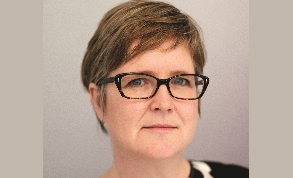Technology funding overhaul
The national body – responsible for digital transformation strategy – published two documents this week. What good looks like provides instructions for NHS managers on what they should be doing to use digital better in their services, while Who pays for what sets out proposal to overcome barriers to investment.
NHSX chief executive Matthew Gould (pictured) said the two documents should give frontline leaders the guidance they need to plan digital transformation. ‘They have been produced following extensive consultations with the frontline, and will continue to change as we get more feedback,’ he said.
In 2021/22, national funds for transformational technology projects will be consolidated into a single fund, addressing concerns that technology funding is currently too complicated. The Unified Tech Fund will set out the funding available – with £680m available in total throughout 2021/22 – and have a single approach to bidding for it. Pre-set amounts of funding will be available for a number of specified purposes, including levelling up digital maturity of NHS trusts and consortia, ensuring a basic shared care record is in place in all integrated care systems and addressing cyber security capabilities.
Applications will be made through an online application form and will be reviewed on a monthly basis.
Other changes this year will include an improved data collection for the Model Health System, the creation of a calculator to help ICSs understand their ‘digital debt’ and what is needed to meet the success measure set out in What good looks like.
From next year onwards, ICSs will be expected to fund the delivery of technology plans from their own budgets as part of a move away from central funding. This will help to address concerns about a misalignment of local and national priorities.
ICS funding will cover applications such as electronic patient records, cloud services and data centres and shared care records. National funding will cover products such as the NHS app, national infrastructure, pilots linked to the NHS long-term plan commitments in advance of national scaling and cross-system requirements such as Office 365.
ICSs will be told their revenue and capital funding for technology before the beginning of each financial year and will decide themselves how to allocate investment funding. Initially funding allocated to ICSs will prioritise the need for levelling-up tech capabilities, but will then move to a fair shares basis. ‘We will move as rapidly as possible to give systems control over a significant majority of the funding available,’ the proposals said. ‘We will work with colleagues in government and NHS England and NHS Improvement to explore whether the capital and revenue mix of funding can be made more flexible and ICSs given more certainty about the amount of funding for tech that will be available to them in future years.’
Reviewing the balance between capital and revenue funding recognises an increasing problem as technology shifts to being consumed and managed as a utility.
NHS Providers deputy chief executive Saffron Cordery (pictured) welcomed the funding guidance as a ‘positive step in the right direction’. It provided helpful information on what would be funded centrally and the responsibilities on systems, although the proposals needed to be aligned with the Health and Social Care Bill.
‘As ever, we also need to be mindful of the amount of funding available for digital innovations and where this fits in a growing list of priorities for health spending,’ she said. ‘The success of this guidance, and the ability of trusts to progress on the digital agenda, will ultimately depend on the comprehensive spending review settlement later this year.’
Related content
We are excited to bring you a fun packed Eastern Branch Conference in 2025 over three days.
This event is for those that will benefit from an overview of costing in the NHS or those new to costing and will cover why we cost and the processes.